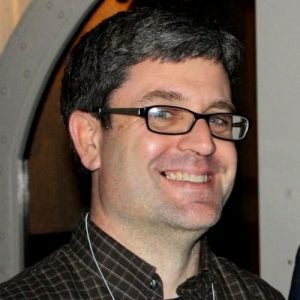Dr. David Bidwell, an Associate Professor of Marine Affairs at the University of Rhode Island, discusses a 2019 paper looking at gatekeeping theory with regard to the Block Island Wind Farm (BIWF) of which he was a co-author of.
“Gatekeeper theory is mostly out of the communications realm and is a theory that deals with how media plays a role determining what it is that we think is important and not important about a topic,” says David Bidwell, associate professor of Marine Affairs at the University of Rhode Island and co-author of a 2019 paper looking at gatekeeping theory with regard to the Block Island Wind Farm (BIWF).
The article analyzes local, regional, and national newspaper coverage of the BIWF paying particular attention to the use of sources by the media. What the team of researchers found was that between 2008 and 2017, the differences between newspaper source usage was minimal but that business sources were cited more than any other group. The prevalence of business sources leads to important questions about the role of businesses shaping narratives about community transitions to renewable energy systems.
“One of the issues is that you’re going to get a different viewpoint depending on who you’re contacting,” says Bidwell. “The job of a state agency is defined very differently than if you’re talking to a developer, who’s coming at things from more of a PR position. He or she is trying to create a positive image of their company and their project.”
Researchers have been studying the BIWF in an effort to understand what influences a community’s decision to adopt renewable energy sources. Multiple factors should be considered including socio-political acceptance, market conditions, and media coverage, among others.
What Bidwell and his colleagues found was that 81% of quotes from local news sources included a quote from a wind farm developer such as Deepwater Wind, Allco, or Cape Wind. 84% of regional or national articles included a quote from a for-profit representative. Quotes from a government or elected representative were used 58% and 61% of the time, respectively. Quotes from scientists as an expert were used 7% and 13% of the time, respectively.
This finding is important for journalists to reflect on their own processes for obtaining quotes. Diversity in source usage has long been supported as an important goal for objective and well-reported stories.
“What are the topics the media is addressing about the wind farm and who is it that they were interviewing?”, asks Bidwell. “The conclusions from the paper suggest that they were different from a lot of public dialogues where you were getting a lot of statements from the developer that you wouldn’t normally get.”
Offshore wind, while not a novel technology, is gaining traction in America, and the development of the BIWF holds important lessons for those involved in current and future efforts to build offshore wind projects. What’s notable, suggest the authors, is both the sources that were cited but also the sources that were left out. As much as developers were interviewed about their thoughts, elected officials and scientists were not given as much prominence. The authors also make special note that almost no tourists were cited in local, regional, or national news sources.
“Those early experiences about how the stakeholders think about a project and how they frame it have ripple effects throughout the whole process of developing a project,” says Bidwell.
Bidwell elaborates that previous research he’s conducted has revealed that there’s no “tabula rasa” or blank slate when it comes to people’s perceptions of offshore wind. If people had a positive experience in the process then that’s going to ripple out. Likewise, if they viewed the burgeoning offshore wind industry in a negative light, this would be revealed in their responses as well.
“People are filtering their experiences with the wind farm through their earlier experiences and I think a lot of that is shaped by the media and media coverage. For instance,” Bidwell says, “the media likes to print stories about conflict so I expect that a lot of people probably assume that there’s more conflict than there actually is. But that could be its own research question right there.”
The framework proposed is important for other future wind projects as they appear.
It’s intended, say the authors, that this study of newspaper coverage will serve as a window into understanding the groups and individuals shaping the social discourse about offshore wind energy production.

